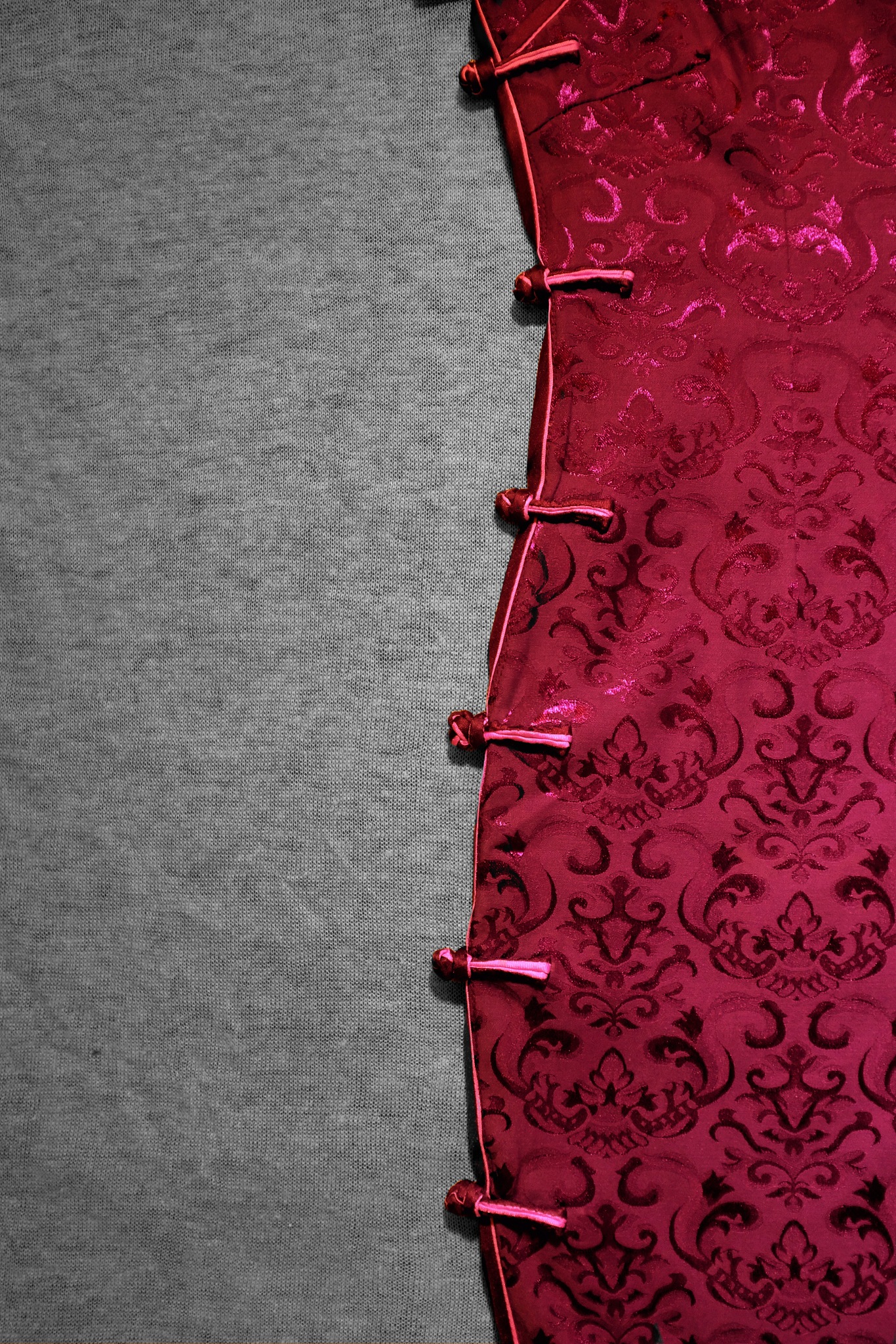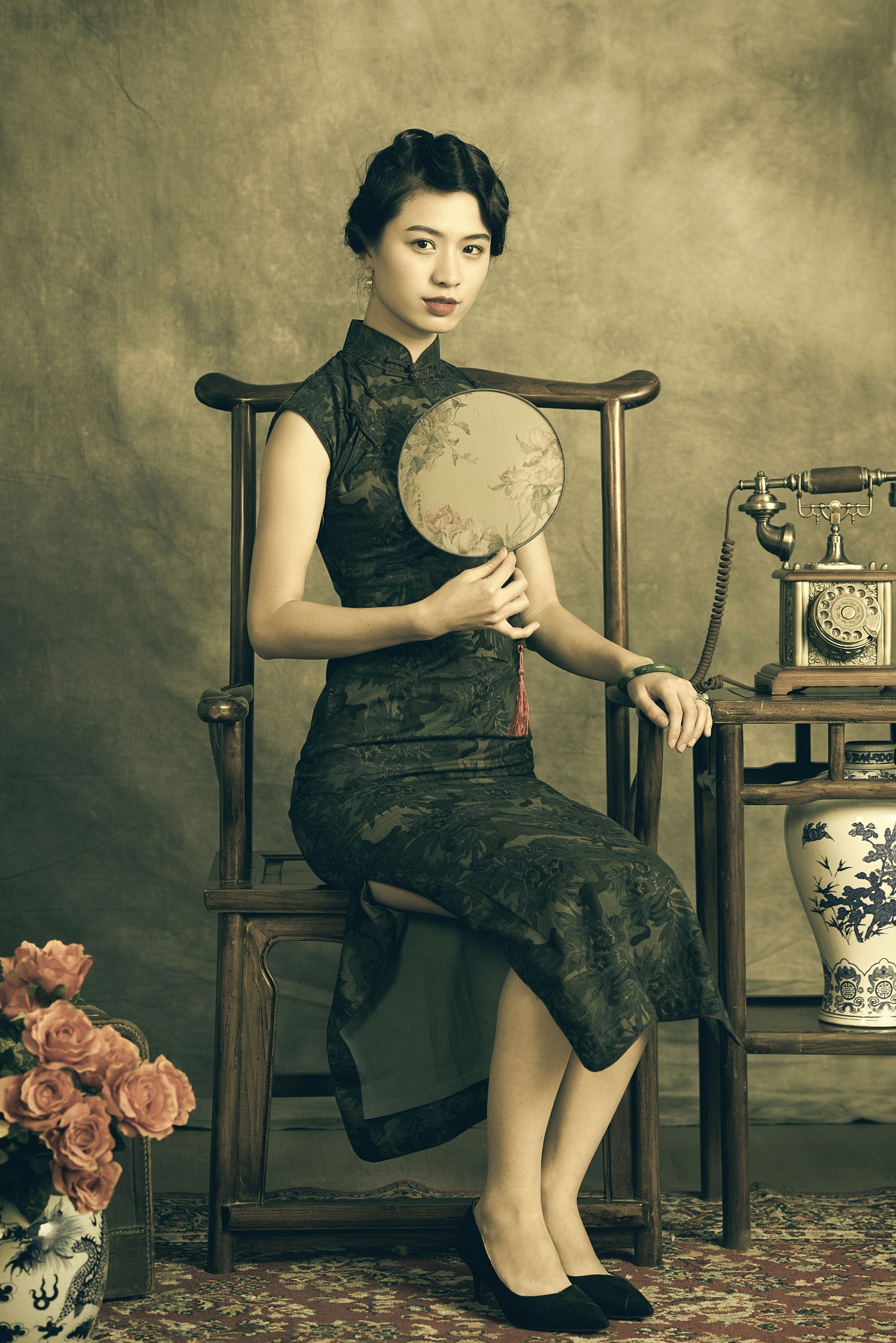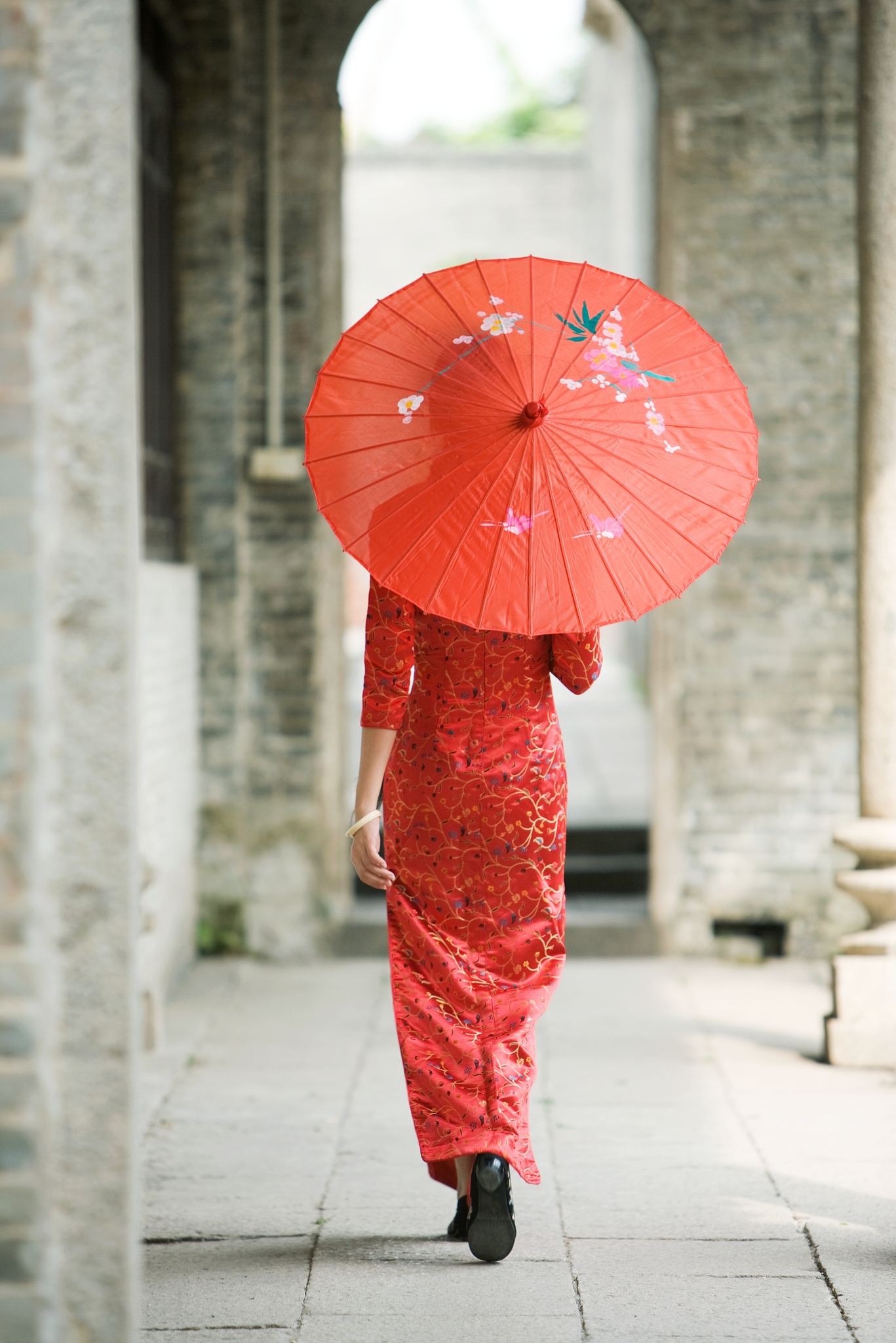The qipao is a dress that brings out the inner elegance of the wearer and embodies the cultural identity and heritage of Chinese women in one sleek and fitting dress.
It has its origins in the 17th century, under the Manchu emperors of the Qing Dynasty (1644-1911). The traditional clothing for a Manchu male was a long robe ("changpao"), while a woman wore a "qipao," a gown that was very different from the one we know today. Cut very wide and loose in an A-shape square, the key features of those robes were a standup-collar, a straight skirt (usually made from silk), and knot buttons. The overall design was modest, with the arms and legs fully covered. It was quite heavy, too, due to the many layers.

China's iconic qipao was designed to flatter the female body. /CFP
China's iconic qipao was designed to flatter the female body. /CFP
So, how did the qipao transform into its far slinkier, body-hugging modern version?
The iconic Chinese dress we're familiar with today originated in Shanghai in the 1920s. The Manchu qipao underwent its modernization during this period, owing to a Western influence. It became popular among Shanghai's celebrities and upper classes. It was even something of a status symbol, as each piece had to be custom-made to flatter the female wearer's body.

The qipao as we know it today became popular in Shanghai among celebrities and the upper class in the 1920s. /CFP
The qipao as we know it today became popular in Shanghai among celebrities and the upper class in the 1920s. /CFP
In 1929, on becoming one of the official national dresses at that time, the qipao became fashionable for women from all walks of life. In addition to the traditional silks, other fabrics – cotton, wool, linen and satin brocade – were used in the production of the new, modern qipao, making it an affordable and fashionable clothing item for everyone.
The modern version is more form-fitting; it can also be shorter than its predecessor, reaching to above the knee, with side slits that reach up to the thigh. The addition of stunning embroidery has made the qipao an artistic embodiment of beauty, elegance and passion.

Many women wear the qipao to demonstrate their elegance. /CFP
Many women wear the qipao to demonstrate their elegance. /CFP
While in the 17th century, women wore a qipao almost daily, today it's far from being everyday clothing. During the 1920s in Shanghai and 1950s in Hong Kong, women still considered it casual wear. Today, though, the qipao is only worn on official occasions, and at weddings, parties, and beauty pageants. It's also used as a uniform at restaurants and hotels, and for airline cabin crew.
Still, the intense colors and elaborate embroidery of traditional qipaos are now being adopted by everyday brands, such as Shanghai Tang, the renowned Hong Kong luxury fashion house.
(Cover: Chinese women's most iconic dress - qipao. /CFP)
For more fascinating tales from China, follow us on @cgtntravelogue on Facebook and Instagram.

